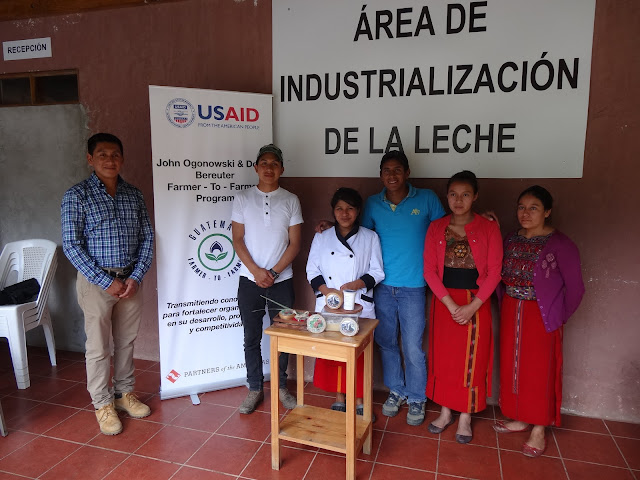Transforming Goat Milk into Valued-Added Soaps & Lotions
Team Presentations at the CEPROCAL Center in Nebaj
The first concrete evidence of soap-like substance is dated around 2800
BC., the first soap makers were Babylonians, Mesopotamians, Egyptians, as well
as the ancient Greeks and Romans. While volunteer Robert Spencer does not have
that many years of experience he does have sixteen years of experience in
making cold-process goat milk soap, shampoo, and lotion. And has done multiple trainings in Myanmar,
Haiti, and Guatemala.
The
overall goal of this project was to provide economic opportunities for women in
small-scale production of value-added agriculture products (oils, animal
byproducts, herbs, vegetables, and fruits), along with goat milk in making skin
care products including soap, shampoo, and lotion in rural areas of
Guatemala. This project host was CEPROCAL who collaborated with Save the Children
Foundation, and the first week of training was conducted in Nebaj (El Quiche
Department) at the local CEPROCAL office.
Students for this class were Save the Children field officers and technicians who would later be responsible for going out into their
respective communities and train clientele.
During these four days of training agriculture
products used included: goat milk, vegetable oils, lard avocado, tomato, coffee
grounds, aloe vera, and flower petals. One of the objectives of this project was
to utilize as many readily available agriculture products as possible while
using the cold-process for making soaps. The only heat involved was a small
propane stove to melt the lard and solid oils (cocoa oil), and the chemical
process between the sodium hydroxide, oils, and liquids.
Photos in this blog will verify the strategy
worked. Spencer said it was inspiring to watch the trainees learn and implement
the process, then take it further to packaging, labeling, and presenting in
team competitions

The second week of training was conducted in
Cunen (El Quiche Department). Our goals and objectives, and training agenda
were very similar to the first week. Trainees in Cunen were also associated
with Save the Children along with a few of the local population. The
ingredients used were the same with additional botanical products specifically
beneficial to skin and hair. Trainees in
Cunen also readily adapted to the training and did outstanding jobs of the
packaging, labeling, and presenting in competitive teams.
Quantitative outcomes for combined trainings
were as follows:
o
31
men & women trained at these two locations, all were adult, 18 were
females, 13 males
o
80% increase in knowledge regarding production
of soap, shampoo, and lotion
o
65
% plan to implement production & marketing of soap, shampoo, and lotion
o
100%
will train others on all aspects associated with production and marketing of
soap, shampoo, and lotion
Soap Mold (Left) and Packaging (Right)
This was the first time for Spencer to
experience using unrefined animal lard and it worked out just fine. The
training also utilized lard so the people could compare, and it too worked out
just fine. Every time Spencer does this in rudimentary conditions he is always
impressed with how well everything works out, and really enjoys working with
people in various countries.








.png)

Comments
Post a Comment